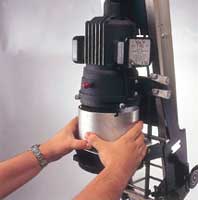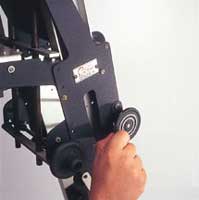Long Live The D2
A Darkroom Classic That Keeps On Ticking
Ah, the Omega D2. Every time
I walk into my darkroom and see my own well-worn enlarger my mind flashes
back to my college days, where the university had about 30 D2s working
hard every day. Many long hours spent putting together my first black
and white portfolio were done under the negative carrier of a D2. My
days as a UPI stringer involved banging off prints on a wobbly D2 and
then slapping those prints on the scanner for beaming around the world.
If you've been making prints for a while, you've used a
D2. |
|||||||
Like buying a used car, buying
a used D2 should be approached with caution. It will always be in your
best interest to buy the cleanest and most solid example, with as many
accessories as possible. I bought mine 10 years ago after it had served
time at a community college. It came with 4x5 and 35mm condenser units,
five film carriers, and three lens mounts. The seller even kicked in a
nice chrome 150 f/5.6 Componon enlarging lens. The damage was only $250
out the door. |
|||||||
The D2 has a filter slot that
will handle 41/2" filters. For a while I tried to use this setup
to print with polycontrast paper, but it's just too much trouble,
frankly. If you have to use poly, or really want to print color, then
look into a dichroic head for the D2. |
|||||||
|
|
||||||
|
|
||||||
- Log in or register to post comments








































